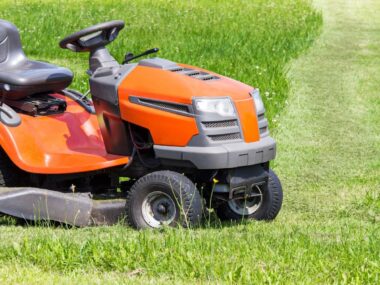In recent years, the need for renewable energy sources has gained considerable force and prominence, made greater by the need to fight climate change and reduce dependence on fossil fuels. One of the most promising sources of renewable energy is wind. Power extracted from wind through wind turbines guarantees clean, sustainable electricity production.
This article will discuss some realistic advice on using wind power in a modern home. Visit https://www.utilitybidder.co.uk/our-services/renewable-energy-and-utilities/wind-power/ to explore the multitudinous benefits of this renewable energy source.
Wind energy is an energy conversion technology by which the kinetic energy in the wind is turned into mechanical or electrical energy using a wind turbine. Wind plants are designed in different ways, but generally, they all operate under a common principle: blowing wind makes the windmill’s propeller-like blades turn around. As it does so, it turns a generator, which produces electricity.
How Do Wind Turbines Work?
Understanding the benefits of wind energy requires a look at how a wind turbine works. It would be better to consider a modern turbine as comprising three propeller-like blades that rotate about an axis, horizontal to the ground. The moving wind across the blades creates lift, just like an airplane’s wing that causes the rotor to spin. Using a shaft and gearbox, the rotor is linked to a generator that increases the rotation speed so power generation can be carried out efficiently.
Then, we also got the vertical-axis wind turbines. They are the kind of turbines with blades rotating about a vertical axis. These are less common but may be suitable and advantageous at certain locations with very uncertain wind direction.
Tips for the Practical Use of Wind Energy at Home
Assess Wind Potential
Check the potential for wind near where you are considering the investment in a wind turbine. The wind speed can be entirely different from one location to another and is greatest in open areas or at higher altitudes. Typically, at a minimum, you will need a wind speed of around 5 meters per second for wind power production.
Selecting the Correct Turbine
It is essential to choose a suitable wind turbine for a home. A homeowner can select a small wind turbine for a single home or one of a larger size to use in community wind projects. The turbine size will depend on the wind potential in your area and your household’s energy needs. Larger wind turbines could produce electricity but may be expensive in terms of space and initial costs.
Installation Considerations
Where it will be installed largely determines a wind turbine’s efficiency. Wind turbines work better in more open areas where nothing can obstruct the normal flow of wind, like the shadow of a tree or a building next to the window. A taller tower will translate to more captured energy when the speed of wind increases with altitude.
Connect to the Power Grid
By connecting your wind turbine to the electrical grid, you are in a position where you can sell extra electricity back to the utility, providing a source of steady income. This process helps to defray costs for the initial investment in your wind farm.
Maintenance and Monitoring
For this, windmills need regular service, including inspecting the turbine blades and electrical connections and confirming that the rotor blades are debris-free.
Modern turbines have monitoring systems that alert homeowners to malfunctions, reducing downtime and maintenance costs.
Advantages of Wind Energy
Environmental Benefits
Most significantly, wind energy generation benefits the environment. Its power generation produces zero greenhouse gas emissions, which are seen using fossil fuels. Correspondingly, it has become an essential weapon in the fight against climate change. Plus, the physical footprint of wind turbines is minimal and helps save land for other uses.
Economic Benefits
Wind power projects are associated with significant potential positive impacts on the economy of local communities. It creates jobs in manufacturing, installation, and maintenance. Also, landowners will be paid lease rentals upon hosting wind turbines on their lands. For this reason, the global wind power sector share has led to substantial reductions in the cost of wind energy, making it more competitive.
Energy Independence
By investing in wind power, homeowners will not depend so much on fossil fuel and nuclear power plants, which might be expensive. This shall not only support a more sustainable energy system but also support energy security. Since electricity can be generated locally, communities will not be vulnerable to fluctuating energy prices and supply shocks.
Reliability and Efficiency
The wind turbines are a highly mature technology today, highly reliable and efficient. Important advances in turbine design include larger rotor diameters and more efficient blades impacting energy production. Offshore wind farms that capture stronger and steadier winds contribute to this steady growth.
Versatility
Wind represents a versatile power source for many kinds of energy applications: electricity generation, pumping water in remote regions, grain grinding, and delivering power to places disconnected from the main power line.
Challenges and Considerations
Wind energy comes with many benefits but several downsides. For instance, wind turbines produce a visual impact, and some communities are concerned about the noise associated with them.
Moreover, power generation is intermittent and depends on the available winds.
Such variability makes the proper integration of wind with other renewable energy sources, such as solar power, a must to maintain reliability in power supply. In addition, initial investments in wind power projects are high. Nonetheless, in the long run, benefits from the low energy costs and environmentally friendly approaches often outweigh such expenses.
Future of Wind Energy
Through continued technological advancement, wind energy will see further development and wider acceptance around the globe. The International Energy Agency prepared its World Energy Outlook, envisioning substantial growth in wind power generation during the following decades. In particular, a significant contribution will come from large-scale offshore wind power.
Similarly, all governments and organizations worldwide are trying to invest in research and development to improve the efficiency of wind turbines, along with a drop in their maintenance cost. Such initiatives make wind energy more competitive and attractive to an increased customer base.
Conclusion
Wind power is an effective and efficient way to harness power for electricity within the modern residential dwelling. Utilizing wind turbines to harness wind energy holds various economic and environmental benefits and advantages for homeowners. Some problems will require a solution, yet as global wind power continues to experience a growing advanced state, the future looks positive for this renewable energy source.
In our development towards a more sustainable energy system, there is no doubt that wind power will play an increasingly important role in providing the electricity we need to generate. Visit Utility Bidder for more information on wind power and how it can benefit your home.
Surfer: https://app.surferseo.com/drafts/s/8zkW7-SrM-C_ITg-BjO0aU5W4s8eJQRV
Plagiarism Report: https://i.ibb.co/kBkNnwR/image.png








